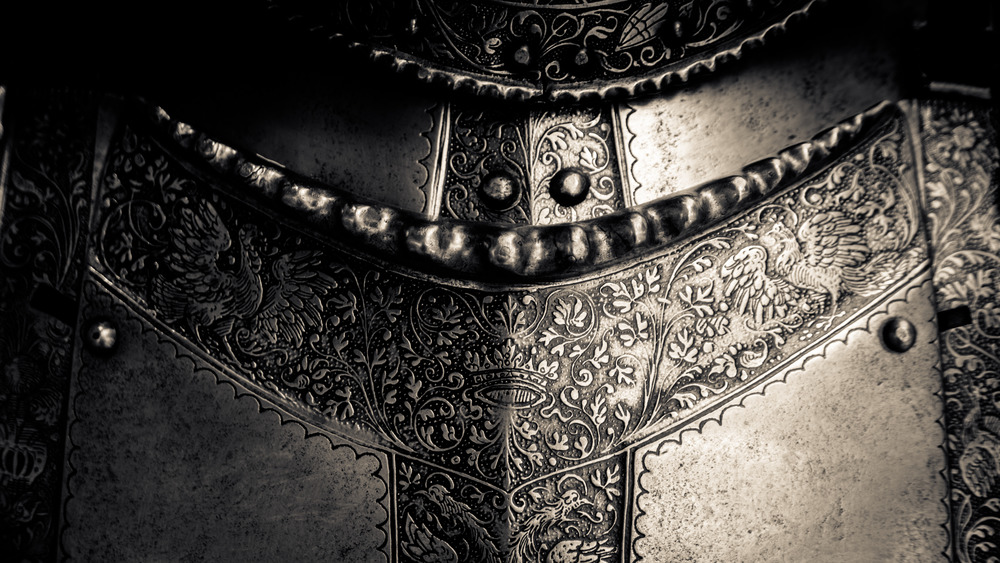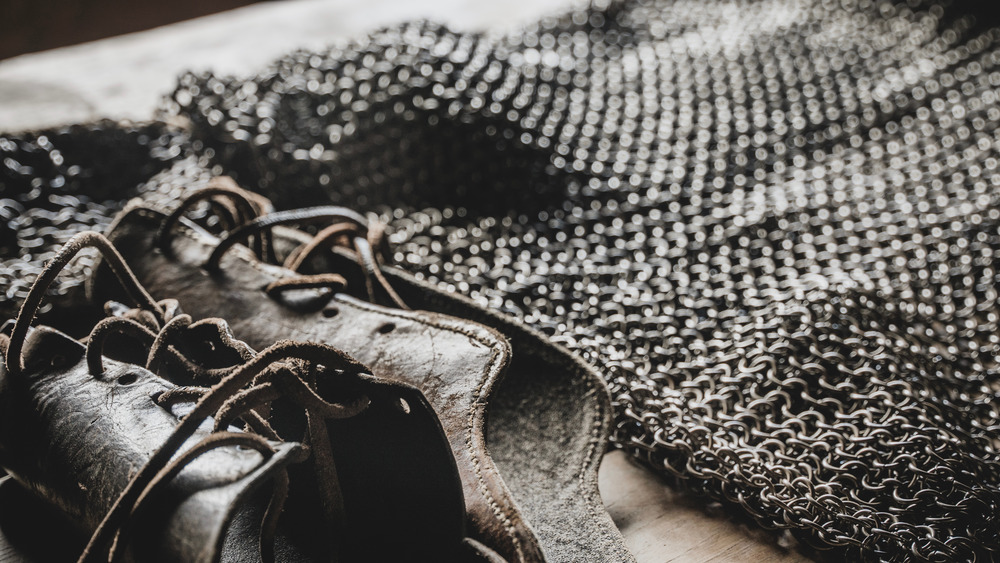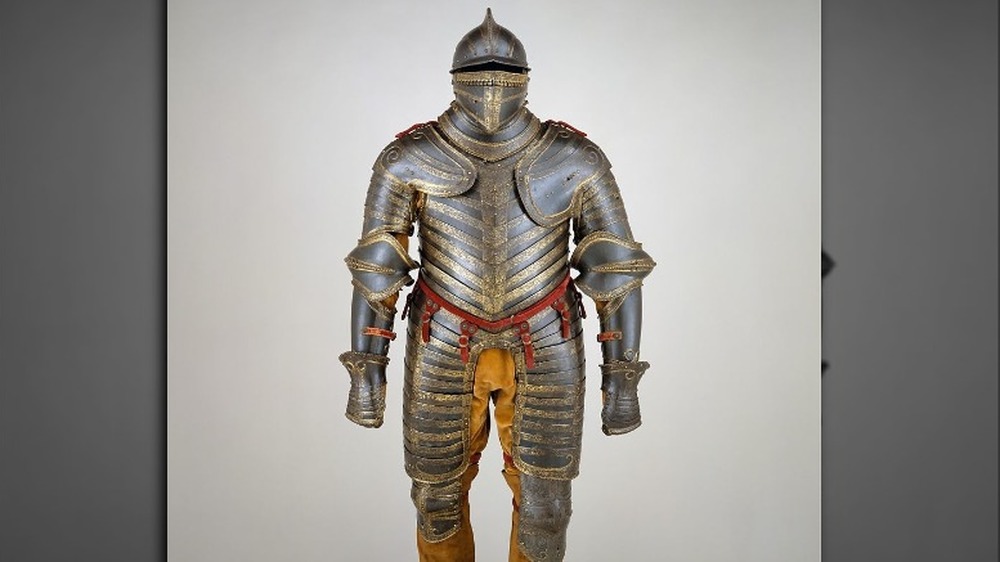What Happens To Your Body When You Wear Medieval Armor Every Day
At this point we've all seen about a gazillion portrayals of armor-clad, medieval knights in TV and movies, from comedies like Monty Python and the Holy Grail and A Knight's Tale (about half the plot is built around forging a suitable suit of armor), to action-and-drama bonanzas like Game of Thrones. Typically, knights are either hulking around like clunky, oversized refrigerators of metal unable to bend their joints, or they're nimble, dual-sword-wielding ballerinas pirouetting into slo-mo action-hero poses.
So, it's understandable why there's so much confusion about medieval combat, and also so much romanticization. Countless YouTube videos have cropped up myth busting medieval armor's strength and durability (here), comparing knight armor vs. samurai armor (here), analyzing how daggers slide up and under scale mail plates (here), and countless more. Eras of history get mixed and matched with fact and fiction, but first off: In this article "medieval" means the period of time from the 11th to 15th century, pre-Renaissance Europe and Great Britain.
During this time, and before, armor was basically a technological, military device that evolved according to advances in metallurgy and demands of warfare. It was made from leather, bronze, iron, and finally steel, an iron-and-carbon alloy that incorporates other elements. As The Fabricator explains, there is a tremendous number of variables that go into steel's hardness, brittleness, tensility, etc., all of which result in armors comprised of different thickness, dimensions, shapes, and of course, weight.
And in the end? All of these affect the wearer's body.
Bespoke technological military equipment that evolved over centuries
You might assume that if someone wears armor every day, they'd wind up with a severe case of scoliosis, or at least a back-breaking chiropractor bill. Okay, that might be true if knights wore armor 24/7, but they didn't (as this Reddit thread discusses); armor was usually only put on for combat or for show. Also, as technology improved, even full plate mail, which didn't exist until the 14th century (per YouTube), got lighter and thinner.
Armor was also a benefit of the wealthy (knights were an elite warrior class) and didn't belong to everyone, especially clergy or peasants who tagged along on campaigns like the Crusades. And as this Vice article states, armor was typically bespoke (custom-made) for one person and would fit very well, no matter how heavy it was. (Also per that Vice article: armor is terrible for typing and getting Starbucks.) So right off the bat: no piece of armor is going to be as difficult to wear as you might think, not in real life, not historically, and not even nowadays. Iron Man, anybody? A dude in a suit of flying armor.
And then there are types of armor: brigandine (leather with metal plates), chain mail (little interlinked hoops), hauberks (the long dress-looking armor with a built-in hoodie called a coif), cuirass (a breastplate and backplate combo), scale mail (oval plates arranged in staggered rows), and of course, full plate (the tank look). Each one felt different to wear.
Wearable in short bursts, tiring over a long time
So let's focus on everyone's regaled, bada** favorite: full plate armor. We can at least lay to rest the notion that it, and other medieval armor, was mere clumsily-engineered sheets of metal encasing a tormented wearer for hours on end. As Warfare History Network points out, a suit of full plate armor weighed about 35-55 pounds depending on material, craftsmanship, thickness, etc.: heavy, but not unmanageable. Knights would mount/dismount their horses unaided. Some did cartwheels in their armor for fun (out of combat, we assume), or even swam in rivers.
Imagine hiking, then: Rei recommends a backpack no more than 20 percent of your body weight. If you weigh 200 pounds, that's a 40-pound pack. Easier to endure if it's concentrated on your torso, but more difficult if it includes gauntlets on the arms, greaves on the shins, sabatons on the feet, etc. As Science Mag points out, even though arm-and-leg pieces are lighter than torso pieces, medieval knights must have modified their gait, breathing, and overall movement to adjust to the weight distribution of their armor. Still, it's going to be a workout over longer periods of time.
So what would happen, exactly, if you wore armor every day? The simple answer is: you'd gain muscle mass. You'd also get super sweaty, much more tired than if you wore a T-shirt and shorts, possibly collapse from fatigue here and there, and definitely have a hard time doing yoga.


